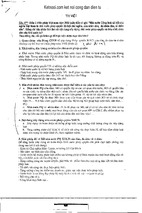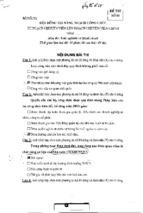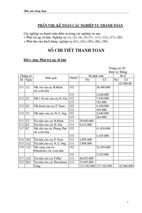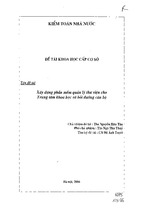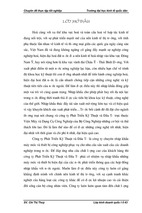Introduction to
Securitization
FRANK J. FABOZZI
VINOD KOTHARI
John Wiley & Sons, Inc.
ffirs.indd iii
6/1/08 12:42:53 AM
ffirs.indd ii
6/1/08 12:42:52 AM
Introduction to
Securitization
ffirs.indd i
6/1/08 12:42:52 AM
The Frank J. Fabozzi Series
Fixed Income Securities, Second Edition by Frank J. Fabozzi
Focus on Value: A Corporate and Investor Guide to Wealth Creation by James L. Grant and James A. Abate
Handbook of Global Fixed Income Calculations by Dragomir Krgin
Managing a Corporate Bond Portfolio by Leland E. Crabbe and Frank J. Fabozzi
Real Options and Option-Embedded Securities by William T. Moore
Capital Budgeting: Theory and Practice by Pamela P. Peterson and Frank J. Fabozzi
The Exchange-Traded Funds Manual by Gary L. Gastineau
Professional Perspectives on Fixed Income Portfolio Management, Volume 3 edited by Frank J. Fabozzi
Investing in Emerging Fixed Income Markets edited by Frank J. Fabozzi and Efstathia Pilarinu
Handbook of Alternative Assets by Mark J. P. Anson
The Global Money Markets by Frank J. Fabozzi, Steven V. Mann, and Moorad Choudhry
The Handbook of Financial Instruments edited by Frank J. Fabozzi
Collateralized Debt Obligations: Structures and Analysis by Laurie S. Goodman and Frank J. Fabozzi
Interest Rate, Term Structure, and Valuation Modeling edited by Frank J. Fabozzi
Investment Performance Measurement by Bruce J. Feibel
The Handbook of Equity Style Management edited by T. Daniel Coggin and Frank J. Fabozzi
The Theory and Practice of Investment Management edited by Frank J. Fabozzi and Harry M. Markowitz
Foundations of Economic Value Added, Second Edition by James L. Grant
Financial Management and Analysis, Second Edition by Frank J. Fabozzi and Pamela P. Peterson
Measuring and Controlling Interest Rate and Credit Risk, Second Edition by Frank J. Fabozzi, Steven V.
Mann, and Moorad Choudhry
Professional Perspectives on Fixed Income Portfolio Management, Volume 4 edited by Frank J. Fabozzi
The Handbook of European Fixed Income Securities edited by Frank J. Fabozzi and Moorad Choudhry
The Handbook of European Structured Financial Products edited by Frank J. Fabozzi and Moorad
Choudhry
The Mathematics of Financial Modeling and Investment Management by Sergio M. Focardi and Frank J.
Fabozzi
Short Selling: Strategies, Risks, and Rewards edited by Frank J. Fabozzi
The Real Estate Investment Handbook by G. Timothy Haight and Daniel Singer
Market Neutral Strategies edited by Bruce I. Jacobs and Kenneth N. Levy
Securities Finance: Securities Lending and Repurchase Agreements edited by Frank J. Fabozzi and Steven
V. Mann
Fat-Tailed and Skewed Asset Return Distributions by Svetlozar T. Rachev, Christian Menn, and Frank J.
Fabozzi
Financial Modeling of the Equity Market: From CAPM to Cointegration by Frank J. Fabozzi, Sergio M.
Focardi, and Petter N. Kolm
Advanced Bond Portfolio Management: Best Practices in Modeling and Strategies edited by Frank J.
Fabozzi, Lionel Martellini, and Philippe Priaulet
Analysis of Financial Statements, Second Edition by Pamela P. Peterson and Frank J. Fabozzi
Collateralized Debt Obligations: Structures and Analysis, Second Edition by Douglas J. Lucas, Laurie S.
Goodman, and Frank J. Fabozzi
Handbook of Alternative Assets, Second Edition by Mark J. P. Anson
Introduction to Structured Finance by Frank J. Fabozzi, Henry A. Davis, and Moorad Choudhry
Financial Econometrics by Svetlozar T. Rachev, Stefan Mittnik, Frank J. Fabozzi, Sergio M. Focardi, and
Teo Jasic
Developments in Collateralized Debt Obligations: New Products and Insights by Douglas J. Lucas,
Laurie S. Goodman, Frank J. Fabozzi, and Rebecca J. Manning
Robust Portfolio Optimization and Management by Frank J. Fabozzi, Peter N. Kolm,
Dessislava A. Pachamanova, and Sergio M. Focardi
Advanced Stochastic Models, Risk Assessment, and Portfolio Optimizations by Svetlozar T. Rachev,
Stogan V. Stoyanov, and Frank J. Fabozzi
How to Select Investment Managers and Evaluate Performance by G. Timothy Haight,
Stephen O. Morrell, and Glenn E. Ross
Bayesian Methods in Finance by Svetlozar T. Rachev, John S. J. Hsu, Biliana S. Bagasheva, and
Frank J. Fabozzi
The Handbook of Municipal Bonds edited by Sylvan G. Feldstein and Frank J. Fabozzi
Subprime Mortgage Credit Derivatives by Laurie S. Goodman, Shumin Li, Douglas J. Lucas, Thomas A
Zimmerman, and Frank J. Fabozzi
ffirs.indd ii
6/1/08 12:42:52 AM
Introduction to
Securitization
FRANK J. FABOZZI
VINOD KOTHARI
John Wiley & Sons, Inc.
ffirs.indd iii
6/1/08 12:42:53 AM
Copyright © 2008 by John Wiley & Sons, Inc. All rights reserved.
Published by John Wiley & Sons, Inc., Hoboken, New Jersey.
Published simultaneously in Canada.
No part of this publication may be reproduced, stored in a retrieval system, or transmitted in any form or by any means, electronic, mechanical, photocopying, recording, scanning, or otherwise, except as permitted under Section 107 or 108 of the 1976 United States
Copyright Act, without either the prior written permission of the Publisher, or authorization
through payment of the appropriate per-copy fee to the Copyright Clearance Center, Inc., 222
Rosewood Drive, Danvers, MA 01923, (978) 750-8400, fax (978) 646-8600, or on the web
at www.copyright.com. Requests to the Publisher for permission should be addressed to the
Permissions Department, John Wiley & Sons, Inc., 111 River Street, Hoboken, NJ 07030,
(201) 748-6011, fax (201) 748-6008, or online at http://www.wiley.com/go/permissions.
Limit of Liability/Disclaimer of Warranty: While the publisher and author have used their
best efforts in preparing this book, they make no representations or warranties with respect
to the accuracy or completeness of the contents of this book and specifically disclaim any
implied warranties of merchantability or fitness for a particular purpose. No warranty may
be created or extended by sales representatives or written sales materials. The advice and
strategies contained herein may not be suitable for your situation. You should consult with a
professional where appropriate. Neither the publisher nor author shall be liable for any loss
of profit or any other commercial damages, including but not limited to special, incidental,
consequential, or other damages.
For general information on our other products and services or for technical support, please
contact our Customer Care Department within the United States at (800) 762-2974, outside
the United States at (317) 572-3993, or fax (317) 572-4002.
Wiley also publishes its books in a variety of electronic formats. Some content that appears in
print may not be available in electronic books. For more information about Wiley products,
visit our web site at www.wiley.com.
Library of Congress Cataloging-in-Publication Data:
Fabozzi, Frank J.
Introduction to securitization / Frank J. Fabozzi, Vinod Kothari.
p. cm. — (The Frank J. Fabozzi series)
Includes bibliographical references and index.
ISBN 978-0-470-37190-9 (cloth)
1. Asset-backed financing. 2. Securities. I. Kothari, Vinod. II. Title.
HG4028.A84F325 2008
332.63’2--dc22
2008014508
Printed in the United States of America.
10 9 8 7 6 5 4 3 2 1
ffirs.indd iv
6/1/08 12:42:53 AM
FJF
To my wife Donna, and my children
Francesco, Patricia, and Karly
VK
To Acharya Mahaprajna
with deepest reverence
ffirs.indd v
6/1/08 12:42:53 AM
ffirs.indd vi
6/1/08 12:42:53 AM
Contents
Preface
xiii
About the Authors
xvii
PART ONE
Background
1
CHAPTER 1
Introduction
3
What Is a Securitization?
Illustration of a Securitization
Securities Issued in a Securitization
Key Points of the Chapter
CHAPTER 2
Issuer Motivation for Securitizing Assets and the Goals of Structuring
Reasons Securitization Is Used for Funding
Structuring Goals
Key Points of the Chapter
5
8
10
11
13
13
21
24
PART TWO
Structuring ABS Transactions
CHAPTER 3
Structuring Agency MBS Deals
Prepayments and Prepayment Conventions
Sequential Pay Structures
Planned Amortization Class Bonds and Support Bonds
Targeted Amortization Class Bonds
29
31
31
38
43
50
vii
ftoc.indd vii
6/1/08 12:43:36 AM
viii
CONTENTS
Accrual Bonds and Accretion-Directed Bonds
Floating Rate Bond Classes
Notional Interest-Only Bond Classes
Key Points of the Chapter
CHAPTER 4
Structuring Nonagency Deals
Identification of the Asset Pool
Selection of the Assets
Identification of Risks
Determination of the Sources and Size of Credit Support
Determination of the Bond Classes
Time Tranching of Bond Classes
Selecting the Pay Down Structure for the Bond Classes
Determination of the Amount and Sources for
Liquidity Support
Determining if Any Prepayment Protection Is Needed
Inclusion of Structural Protection Triggers
Key Points of the Chapter
CHAPTER 5
Credit Enhancements
Credit Enhancement Mechanisms
Sizing of Credit Enhancements
Key Points of the Chapter
CHAPTER 6
Use of Interest Rate Derivatives in Securitization Transactions
Interest Rate Swaps
Caps and Floors
Counterparty Risk
Key Points of the Chapter
ftoc.indd viii
50
55
60
61
65
68
69
70
72
73
75
76
77
78
79
80
85
86
93
97
101
101
115
118
120
CHAPTER 7
Operational Issues in Securitization
123
The Servicing Function
Types of Servicers
124
124
6/1/08 12:43:37 AM
Contents
Servicer Strengths
Servicer Qualities
Servicing Transition
Backup Servicer
Reporting by the Servicer
Role of Trustees in Operation of the Transaction
Fraud Risk
Key Points of the Chapter
ix
125
128
141
142
142
143
144
145
PART THREE
Review of ABS Collateral
CHAPTER 8
Collateral Classes in ABS: Retail Loans
Collateral Classes: Basis of Classification
Collateral Classes: Main Types
Credit Card Receivables
Auto Loan Securitization
Key Points of the Chapter
149
149
152
153
161
165
CHAPTER 9
Asset-Backed Commercial Paper Conduits and
Other Structured Vehicles
169
Types of ABCP Conduits
Traditional Securitization and ABCP
ABCP Collateral
Credit Enhancement Structure
Liquidity Support
Parties to an ABCP Program
Rating of ABCP Conduits
Key Points of the Chapter
170
173
174
174
177
178
180
182
CHAPTER 10
Securitization of Future Cash Flows: Future Revenues,
Operating Revenues, and Insurance Profits
187
Future Revenues Securitization
Whole Business or Operating Revenues Securitization
ftoc.indd ix
147
187
195
6/1/08 12:43:37 AM
x
CONTENTS
Securitization of Insurance Profits
Key Points of the Chapter
204
206
PART FOUR
Collateralized Debt Obligations
CHAPTER 11
Introduction to Collateralized Debt Obligations
Why Study CDOs?
Terminology: CDO, CBO, CLO
Types of CDOs
Typical Structure of a CDO
Basic Economic Drivers of CDOs
CDO Market and the Health of Banking
Growth of the CDO Market
Key Points of the Chapter
CHAPTER 12
Types of Collateralized Debt Obligations
Balance Sheet CDOs
Arbitrage CDOs
Resecuritization or Structured Finance CDOs
Index Trades and Index Tracking CDOs
Key Points of the Chapter
CHAPTER 13
Structuring and Analysis of CDOs
Measures of Pool Quality
Asset and Income Coverage Tests
Ramp-Up Period
The CDO Manager
Investing in CDOs
Collateral and Structural Risks in CDO Investing
Key Points of the Chapter
ftoc.indd x
209
211
211
212
213
217
220
224
225
227
229
229
243
249
251
252
255
255
257
261
261
265
266
270
6/1/08 12:43:37 AM
Contents
xi
PART FIVE
Implications for Financial Markets
CHAPTER 14
Benefits of Securitization to Financial Markets and Economies
275
Securitization and Funding Costs
Securitization and Financial Intermediation
Benefits of Securitization in an Economy
Key Points of the Chapter
277
281
284
288
CHAPTER 15
Concerns with Securitization’s Impact on
Financial Markets and Economies
Reduces the Effectives of Monetary Policy
Adverse Impact on Banks
Lax Underwriting Standards and
Poorly Designed Securities
Increases Opaqueness of Bank Risk
Key Points of the Chapter
APPENDIX A
Basics of Credit Derivatives
291
291
293
294
300
302
305
Elements of a Credit Derivative Transaction
Bilateral Deals and Capital Market Deals
Reference Asset or Portfolio
Structured Portfolio Trade
Types of Credit Derivatives
306
310
311
312
321
APPENDIX B
Valuing Mortgage-Backed and Asset-Backed Securities
325
Cash Flow Yield Analysis
Zero-Volatility Spread
Valuation Using Monte Carlo Simulation and
OAS Analysis
Measuring Interest Risk
ftoc.indd xi
273
325
327
328
339
References
343
Index
349
6/1/08 12:43:37 AM
ftoc.indd xii
6/1/08 12:43:37 AM
Preface
here is a choice of books on securitization, collateralized debt obligations (CDOs), and structured credit products. In fact, both of
us have written other books on the subject. This book, however, was
conceived as a short, handy and easy-to-comprehend guide to securitization, minus technical details. The idea originated while both of
us were working on a comprehensive article on securitization: One
which says it all in a limited space and serves as a curtain-raiser
on the subject. As we were both very happy with the result of our
efforts, we realized that practitioners as well as students need a simpler introduction to securitization than what they are being served in
compendious volumes full of details that they may not need. Hence,
the caption Introduction to Securitization.
When we were writing this book, the subprime crisis had already
started erupting from various quarters. Different commentators had
already started criticizing securitization for the subprime losses and
consequent repercussions on the global economy. By the time we
completed the book, securitization seemed to have become a hated
word by several people. Though we have seen financial innovation
over several years and we may easily distinguish between a temporary fad and a basic bad, we asked ourselves serious questions about
the fundamental logic of securitization. Our analysis has been that
securitization as a tool tries to weave a structured fabric, picking up
threads from the financial assets originated by banks and others. If
the underlying assets are bad, one cannot expect to weave gold out
of it. We have taken up the gains and concerns in securitization at
length in this book.
In short, the book is concise, comprehensive, and contemporary.
Since there has been a coming together of the principles of structured
finance with credit derivatives, we have included the fundamentals of
structured credit products and CDOs in this book.
T
xiii
fpref.indd xiii
6/1/08 12:43:10 AM
xiv
PREFACE
The book is divided into five parts. The two chapters in Part One
provide the background for securitization. In Chapter 1 we explain
what securitization is, the relationship between securitization and
structured finance, how securitization differs from traditional forms
of financing, the types of securities issued (asset-backed securities),
and the parties to a securitization. We explain the six primary reasons
why a corporation might prefer to use securitization as a vehicle for
raising funds rather than issuing corporate bonds and the goals when
a corporation structures a securitization transaction in Chapter 2.
Part Two has five chapters that look more closely at how to structure a securitization transaction. We begin in Chapter 3 with the securitization of conforming loans that result in the creation of agency
mortgage-backed securities and the redistribution of cash flows to
create collateralized mortgage obligations (CMOs). After explaining
prepayments and prepayment conventions, we describe the different
types of bond classes or tranches in a CMO structure. We begin with
agency products because it allows us to clearly demonstrate how the
risk of the collateral of a pool of assets is redistributed amongst the
different bond classes. The risks redistributed in the case of agency
CMOs is prepayment risk and interest rate risk. We then move into
the structuring nonagency deals which include the securitization of
prime mortgages and subprime loans in Chapter 4. In the case of
nonagency deals involving residential mortgage loans, structuring
involves the redistribution of prepayment and interest rate risks and
credit risk. We explain the difference in structuring considerations
for a prime and subprime transaction.
We cover credit enhancement mechanisms in a securitization transaction in Chapter 5. We explain that (1) the amount of credit enhancement required to obtain a targeted credit rating is set by the rating
agencies, (2) the amount of credit enhancement will depend on the type
of collateral, (3) some forms of credit enhancement are more suitable
for certain types of assets but would be totally inappropriate for other
types, and (4) all credit enhancement has a cost associated with it so
an economic analysis of the cost of further enhancement of a structure
versus the improved execution of the transaction must be analyzed in
considering why additional credit enhancement is justified.
A securitization transaction may require the use of an interest
rate derivative for asset-liability management or yield enhancement.
fpref.indd xiv
6/1/08 12:43:11 AM
Preface
xv
We describe the different types of interest rate derivatives used (interest rate swaps, interest rate caps, and interest rate corridors) in Chapter 6. Since these instruments are over-the-counter financial products,
this exposes a transaction to counterparty risk. After providing the
basics about interest rate derivatives, we explain how they are used in
a securitization providing examples from prospectus supplements.
Operational risk refers to the various risks that any of the agents
responsible for the various operations or processes that lead to
transformation of the securitized assets into investors’ cash flows
may not do what they are supposed to do, or there might be failure
of systems, equipments, or processes that may lead to leakages, costs,
delays, etc. Because operational issues in securitization have attracted
quite some attention in recent years, we devote Chapter 7 to this
topic.
The three chapters in Part Three review the different types of
assets that have been securitized. In Chapter 8, we make a distinction
between the securitization of existing assets and future assets and a
distinction between a cash securitization and a synthetic securitization. We then go on to discuss the two main types of retail assets that
have been securitized (in addition to residential mortgage loans that
we covered in Part Two): credit card receivables and auto loans. Assetbacked commercial paper conduits, structured investment vehicles,
etc. have been hotly talked about lately. We discuss the structure of
these conduits and how it differs from term securitization, in Chapter
9. In addition, in that chapter, we explain other structured vehicles
(conduits based on liquidity support, the number of sellers, and on
asset type). In Chapter 10 we cover the securitization of future cash
flows, whole business securitization (also referred to as operating
revenues securitization), and securitization of embedded profits in
insurance businesses.
In Part Four we look at the application of securitization technology to structured credit portfolios, more specifically collateralized
debt obligations (CDOs). In Chapter 11, we provide an introduction to CDOs, explaining the economic motivation for their creation, the terminology used in CDOs, the structure of CDOs, and
the types of CDOs. More details about the types of CDOs, including
their structure and special features, are described in Chapter 12. This
includes balance sheet CDOs (cash and synthetic), arbitrage CDOs
fpref.indd xv
6/1/08 12:43:11 AM
xvi
PREFACE
(cash and synthetic), the resecuritization or structured finance CDOs,
and index trades and indexing tracking CDOs. We devote Chapter
13 to a variety of issues concerning CDOs involving structuring and
their analysis. In that chapter we look at measures of pool quality
(asset quality tests, diversity tests), asset and income coverage tests
(overcollateralization tests and interest coverage tests), the ramp-up
period, the CDO manager, investing in CDOs, and collateral and
structural risk in CDO investing.
Part Five looks at the implications of securitization for financial
markets and economies. We set forth the benefits of securitization in
Chapter 14 and the concerns with securitization in Chapter 15.
There are two appendices. Appendix A provides the basics of
credit derivatives. We provide coverage on this latest type of derivative product because of its use in creating synthetic CDOs. In Appendix B, we explain the fundamental of valuing MBS and ABS.
In order to ensure that each chapter can be condensed into key
learnings, we provide a list of the key points covered in the chapter
for all the chapters. We believe that these key points will allow the
reader to quickly assimilate the “take home” value after reading a
chapter.
We hope this book will be a valuable addition to the existing
literature on the subject.
Frank J. Fabozzi
Vinod Kothari
fpref.indd xvi
6/1/08 12:43:11 AM
About the Authors
Frank J. Fabozzi is Professor in the Practice of Finance and Becton Fellow
in the School of Management at Yale University. Prior to joining the Yale
faculty, he was a Visiting Professor of Finance in the Sloan School at MIT.
Professor Fabozzi is a Fellow of the International Center for Finance at Yale
University and on the Advisory Council for the Department of Operations
Research and Financial Engineering at Princeton University. He is an affiliated professor at the Institute of Statistics, Econometrics and Mathematical
Finance at the University of Karlsruhe (Germany). He is the editor of the
Journal of Portfolio Management and an associate editor of the Journal of
Fixed Income and the Journal of Structured Finance. He earned a doctorate
in economics from the City University of New York in 1972. In 2002, Professor Fabozzi was inducted into the Fixed Income Analysts Society’s Hall
of Fame and is the 2007 recipient of the C. Stewart Sheppard Award given
by the CFA Institute. He earned the designation of Chartered Financial Analyst and Certified Public Accountant. He has authored and edited numerous
books about finance.
Vinod Kothari, chartered accountant and chartered secretary, is an established author, trainer, and consultant on asset-based financing, structured
finance, and structured credit. Mr. Kothari has been a rank holder throughout his academic career and was awarded the Outstanding Young Person
Award in the field of Finance and Taxation by a voluntary organization.
He wrote his first book at the age of 23; he has authored books on leasing,
securitization, credit derivatives, and security interests. Mr. Kothari is a visiting faculty at Indian Institute of Management, Kolkata, where he teaches
structured finance, and a visiting faculty at National University of Juridical
Sciences, Kolkata, where he teaches corporate insolvency.
xvii
flast.indd xvii
6/1/08 12:42:25 AM
- Xem thêm -



